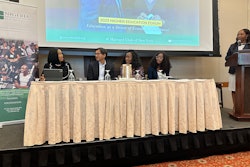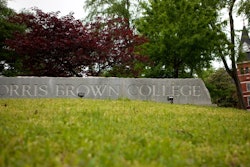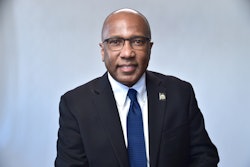Looking Like America
A s we usher in the “real” new millennium and with the presidential inauguration just around the corner, many eyes have been on President-elect George W. Bush’s Cabinet picks. Many wondered whether he would choose a bi-partisan Cabinet to appease Democrats, considering the outcome of the presidential election, or whether he would select Cabinet members known to share his conservative agenda.
But an interesting thing has happened — among his 14 Cabinet positions, Bush has selected an ethnically diverse Cabinet — two Black men, one Asian American man, (a Democrat), a Hispanic man and a Hispanic woman. Though not a Cabinet post, Bush also named Condoleezza Rice, who is African American, as his national security adviser. However, despite the ethnic diversity of his Cabinet, some say this is where the diversity ends, because politically, they are a bit more homogenous.
So is this just window-dressing? Does having a racially and ethnically diverse Cabinet — with key positions held by minorities — such as Education and
Labor — mean that issues important to African Americans and other minorities will be addressed?
To take the lead on Bush’s “signature issue” — education — the President-elect has nominated Dr. Roderick R. Paige, a graduate of historically Black Jackson State University, as U.S. Secretary of Education, who will be the first African American education secretary if confirmed. Educators are praising Paige’s nomination, commending the Houston school superintendent for raising test scores and improving performance in that city’s diverse school system (see story, page 10).
Praise has not been so plentiful, however, for Bush’s nomination of Linda Chavez for labor secretary. As president of the Center for Equal Opportunity, Chavez has orchestrated a highly publicized series of studies that examined affirmative action at selected public universities and military academies. Jim Sweeney, president of the AFL-CIO, says it is an insult to American working men and women to “put an avowed opponent of the most basic workers’ rights in charge of enforcing the federal laws and regulations that protect workers’ wages, employment…” (see story, page 21). Hispanic groups have also objected to her record on affirmative action and English as the nation’s official language. She is expected to face intense Senate confirmation hearings.
Only time will tell, and more importantly demonstrate, the impact that having an ethnically diverse Cabinet in a largely conservative Bush administration will have on American public policy. Remember the old saying, “He may be your color, but he ain’t your kind.”
Early next month, Duke University will pay tribute to Dr. John Hope Franklin by dedicating the John Hope Franklin Center for Interdisciplinary and International Studies to the 85-year-old historian. BI Senior Writer Joan Morgan visited Franklin recently and spoke with him about the new center, his personal influences and his current projects, which includes, according to Franklin, his last book — his autobiography (see story, page 26).
This all looks more like America. Following President Clinton’s example of diversifying the presidential Cabinet, Bush has, at least outwardly, made his Cabinet look representative of this nation. Now we just have to wait to see what they do. It also looks and feels more like America when administrators, faculty and staff, and not just Black, at a prestigious educational institution such as Duke, or any college or university for that matter, decide to work together, despite their differences, to achieve one common goal — to honor a man who has made outstanding and groundbreaking contributions to the field of American history and international studies — and who just happens to be Black.
Hilary Hurd
Editor
© Copyright 2005 by DiverseEducation.com





















